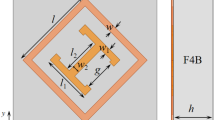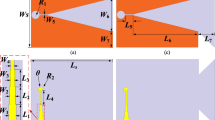Abstract
A photonic method for nonlinear frequency-modulated (NLFM) waveform generation with increased time bandwidth product (TBWP) is proposed based on polarization modulation and phase coding. A lightwave generated by a laser diode is firstly injected into a phase-coherent orthogonal lightwave generator (POLG). The POLG consists of a dual-polarization binary phase shift keying (DPBPSK) modulator and a polarization controller (PC). The DPBPSK modulator is driven by a radio frequency (RF) signal via a 90° hybrid coupler. After the POLG, a pair of phase-coherent orthogonally polarized optical carriers are generated and injected into a polarization modulator (PolM) which is driven by a specially designed phase modulation signal. After another PC and a polarizer, the optical signal is detected by a photodetector and an NLFM waveform can be generated. The central frequency and bandwidth of the generated NLFM waveform can be easily adjusted by tuning the frequency of the RF signal applied to the DPBPSK modulator and the phase modulation signal applied to the PolM. The TBWP of the generated NLFM waveform can be further increased by phase coding technique. A numerical simulation is conducted to verify the proposal. The generated NLFM waveforms have a great improvement in peak-to-sidelobe ratio of the compressed pulses compared with linear frequency-modulated waveforms with the same bandwidth, duration and phase coding.











Similar content being viewed by others
Availability of data and material
The data that support the findings of this study are available from the corresponding authors upon reasonable request.
Code availability
The relevant codes are available from the corresponding authors upon reasonable request.
References
Capmany, J., Novak, D.: Microwave photonics combines two worlds. Nat. Photonics 1(6), 319–330 (2007)
Ghavamirad, R., Sebt, M.A.: Sidelobe level reduction in ACF of NLFM waveform. IET Radar Sonar Navig. 13(1), 74–80 (2019)
Kurdzo, J.M., Cheong, B.L., Palmer, R.D., Zhang, G.: Optimized NLFM pulse compression waveforms for high-sensitivity radar observations. In: 2014 International Radar Conference, pp. 1–6 (2014)
Levanon, N., Mozeson, E.: Radar Signals. Wiley, Hoboken (2004)
Li, M., Yao, J.: Photonic generation of continuously tunable chirped microwave waveforms based on a temporal interferometer incorporating an optically pumped linearly chirped fiber Bragg grating. IEEE Trans. Microw. Theory Tech. 59(12), 3531–3537 (2011)
Rashidinejad, A., Li, Y., Weiner, A.M.: Recent advances in programmable photonic-assisted ultrabroadband radio-frequency arbitrary waveform generation. IEEE J. Quantum Electron. 52(1), 1–17 (2015)
Skolnik, M.: Radar handbook. McGraw-Hill Education, New York (2008)
Tong, Y.: Advanced photonics-based radar signal generation technology for practical radar application. J. Light. Technol. 39(11), 3371–3382 (2021)
Tovar, P., Ynóquio, L.E., Ribeiro, R.M., von der Weid, J.P.: Photonic generation of NLFM microwave pulses from DFB-laser chirp. IEEE Photon. Technol. Lett. 31(17), 1417–1420 (2019)
Wang, X., Ma, J., Huang, S., Zhang, Q.: Generation of frequency septupled chirped microwave waveforms with increased TBWP based on two cascaded polarization modulators. Opt. Commun. 424, 1–6 (2018)
Witte, E.D., Griffiths, H.D.: Improved ultra-low range sidelobe pulse compression waveform design. Electron. Lett. 40(22), 1448–1450 (2004)
Xing, Y., Shi, W., Zhang, K.: Photonic approach to linearly chirped microwave waveform generation with large time–bandwidth product capability. Opt. Rev. 27(1), 65–72 (2020)
Xue, C., Ji, S., Hong, Y., Jiang, N., Li, H., Qiu, K.: Numerical investigation of photonic microwave generation in an optically injected semiconductor laser subject to filtered optical feedback. Opt. Express 27(4), 5065–5082 (2019)
Yao, J.: Microwave photonics. J. Light. Technol. 27(3), 314–335 (2009)
Zeitouny, A., Stepanov, S., Levinson, O., Horowitz, M.: Optical generation of linearly chirped microwave pulses using fiber Bragg gratings. IEEE Photon. Technol. Lett. 17(3), 660–662 (2005)
Zhang, Y., Ye, X., Guo, Q., Zhang, F., Pan, S.: Photonic generation of linear-frequency-modulated waveforms with improved time-bandwidth product based on polarization modulation. J. Light. Technol. 35(10), 1821–1829 (2017)
Zhang, K., Zhao, S., Yin, Y., Lin, T., Li, X., Jiang, W., Wang, G.: Photonic generation and transmission of linearly chirped microwave waveform with increased time-bandwidth product. IEEE Access. 7, 47461–47471 (2019)
Zhou, P., Zhang, F., Guo, Q., Pan, S.: Generation of NLFM microwave waveforms based on controlled period-one dynamics of semiconductor lasers. Opt. Express 28(22), 32647–32656 (2020)
Zhuang, J., Chan, S.: Phase noise characteristics of microwave signals generated by semiconductor laser dynamics. Opt. Express. 23(3), 2777–2797 (2015)
Zhuang, J., Li, X., Li, S., Chan, S.: Frequency-modulated microwave generation with feedback stabilization using an optically injected semiconductor laser. Opt. Lett. 41(24), 5764–5767 (2016)
Funding
National Natural Science Foundation of China (Nos. U2006217 and 61775015); Fundamental Research Funds for the Central Universities (Nos. 2021JBZ103 and 2021YJS002).
Author information
Authors and Affiliations
Contributions
Conceptualization: [Yuxiao Guo], Writing—original draft: [Yuxiao Guo], Funding acquisition: [Muguang Wang], Supervision: [Muguang Wang], Writing—review & editing: [Muguang Wang], Data Curation: [Hongqian Mu], Visualization: [Guofang Fan].
Corresponding author
Ethics declarations
Consent to participate
Not applicable.
Consent for publication
Not applicable.
Competing interests
The authors have no relevant financial or non-financial interests to disclose.
Additional information
Publisher's Note
Springer Nature remains neutral with regard to jurisdictional claims in published maps and institutional affiliations.
Rights and permissions
About this article
Cite this article
Guo, Y., Wang, M., Mu, H. et al. NLFM microwave waveform generation with increased time bandwidth product based on polarization modulation and phase coding. Opt Quant Electron 54, 244 (2022). https://doi.org/10.1007/s11082-022-03574-2
Received:
Accepted:
Published:
DOI: https://doi.org/10.1007/s11082-022-03574-2




